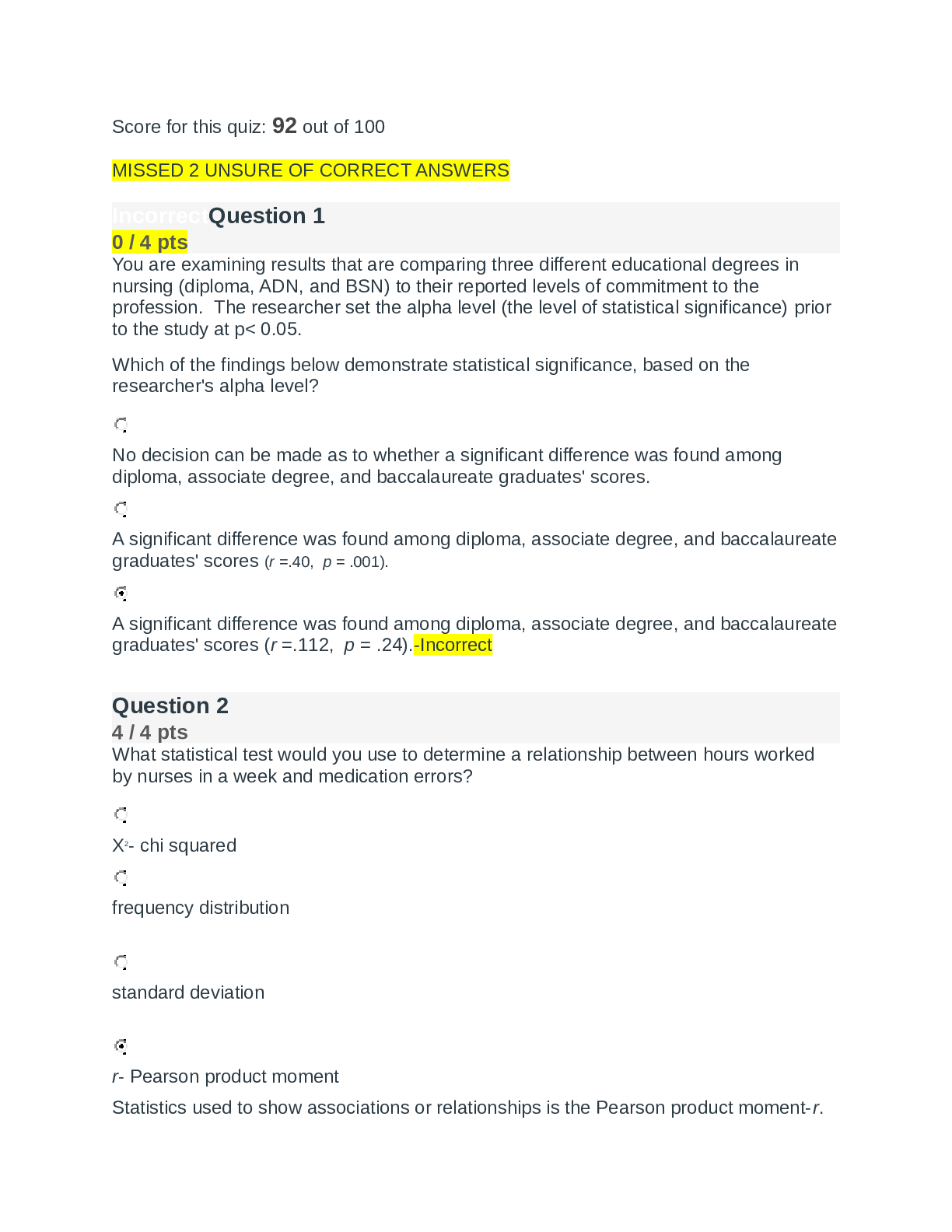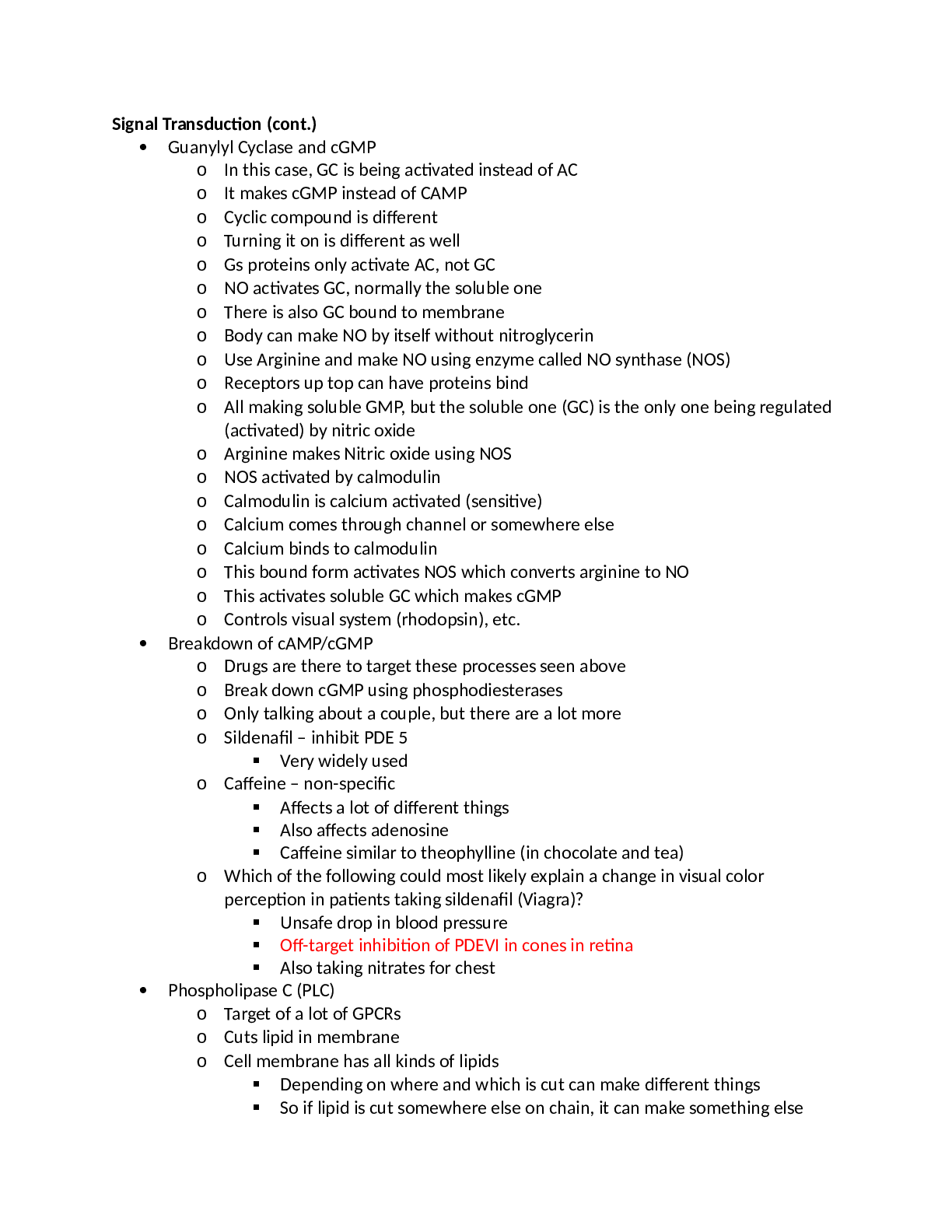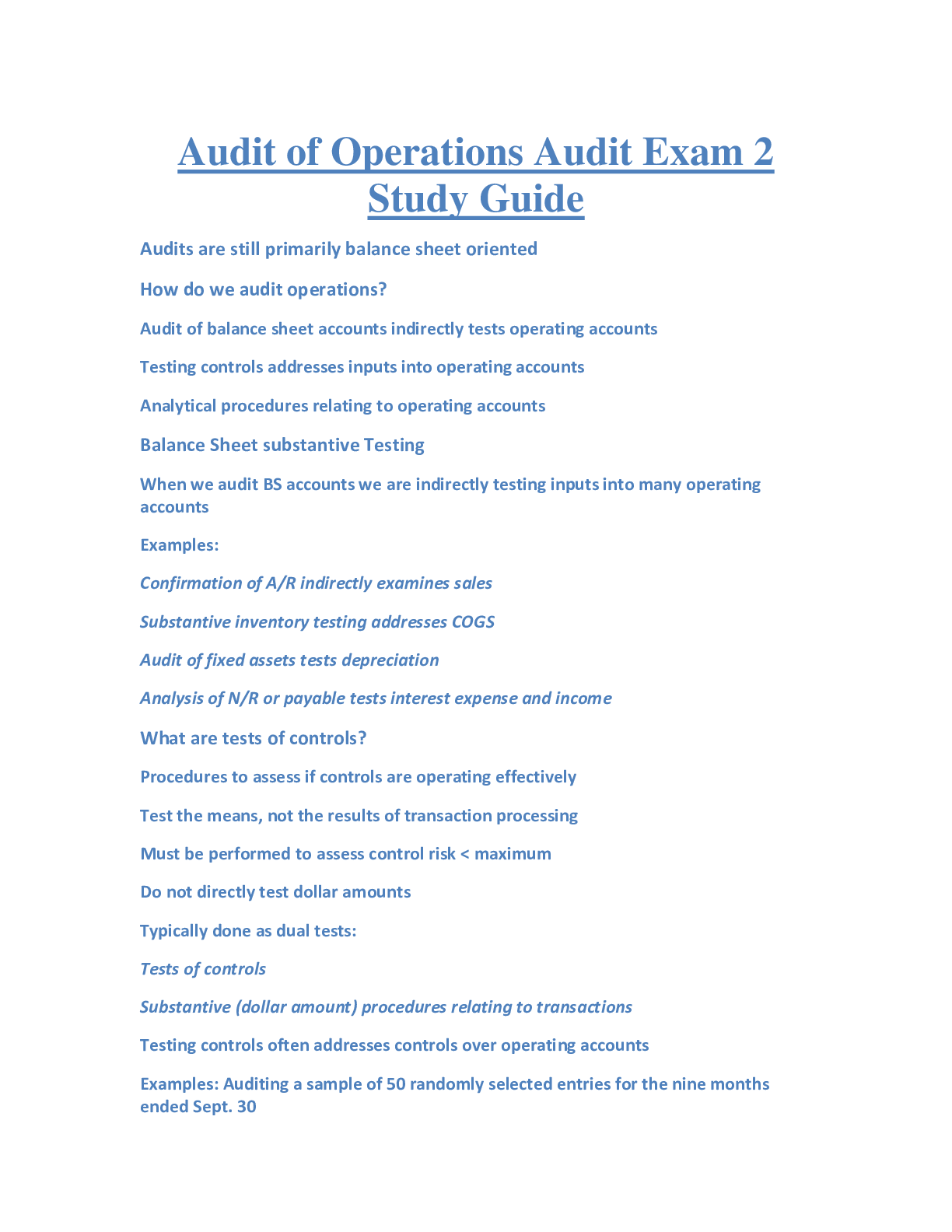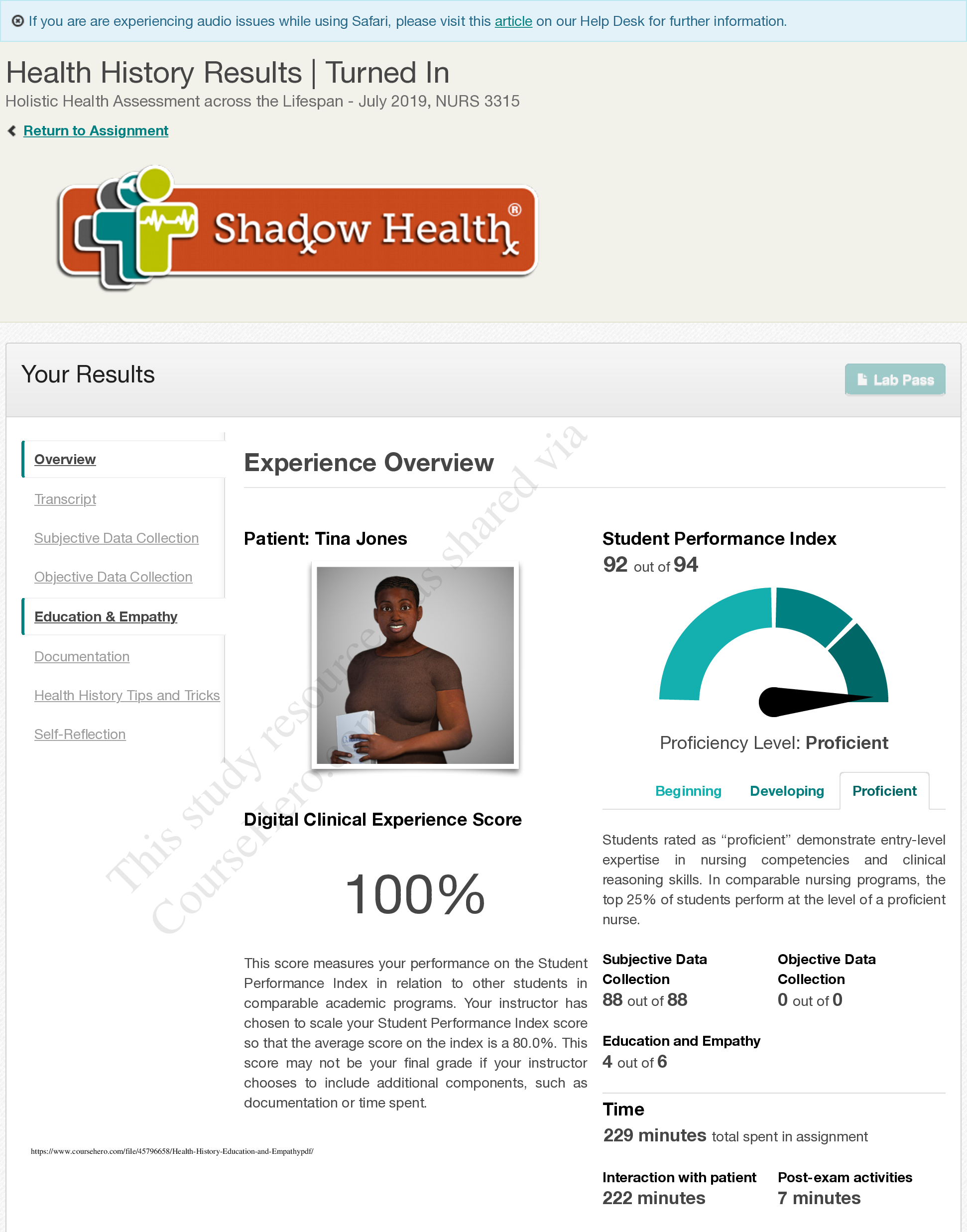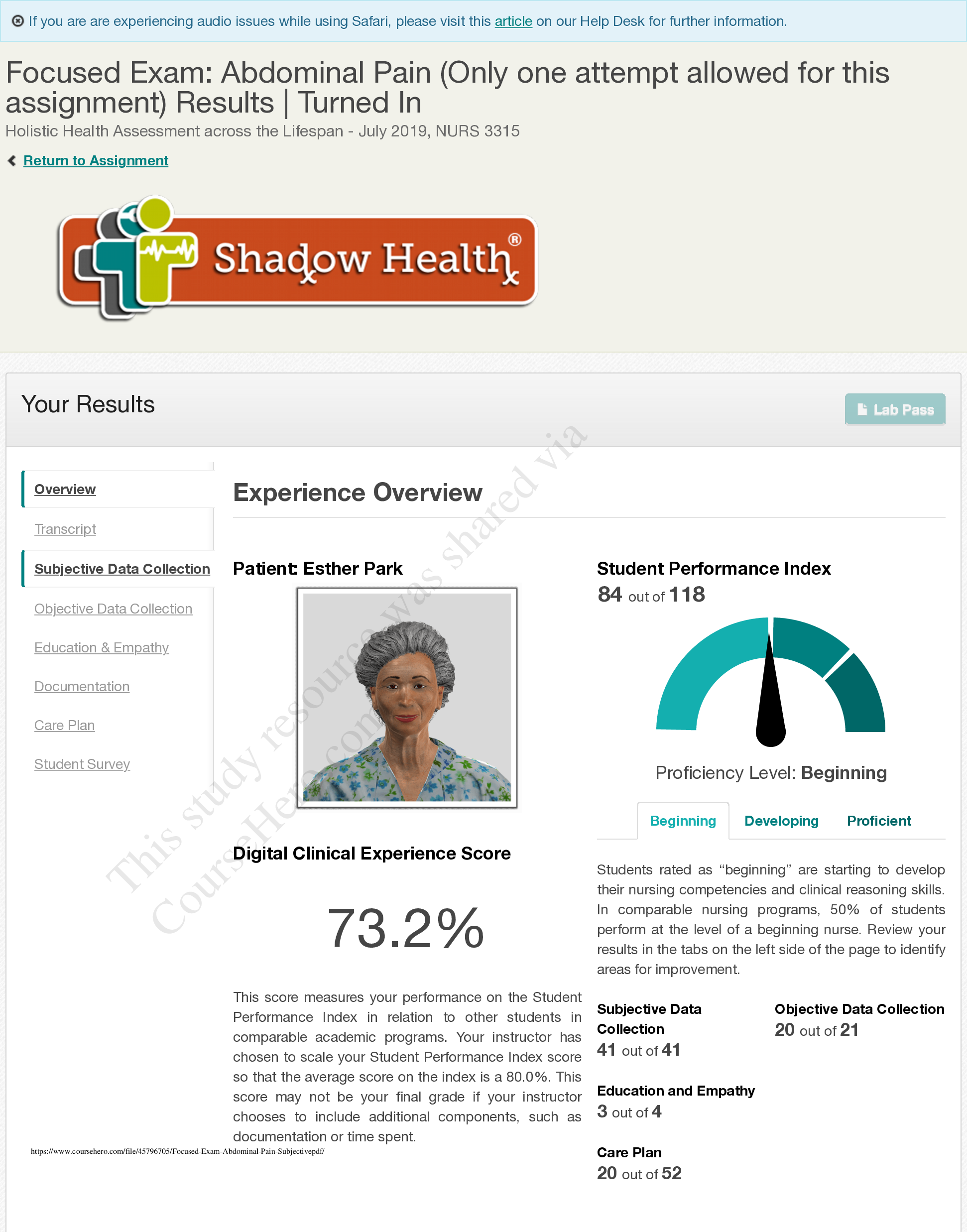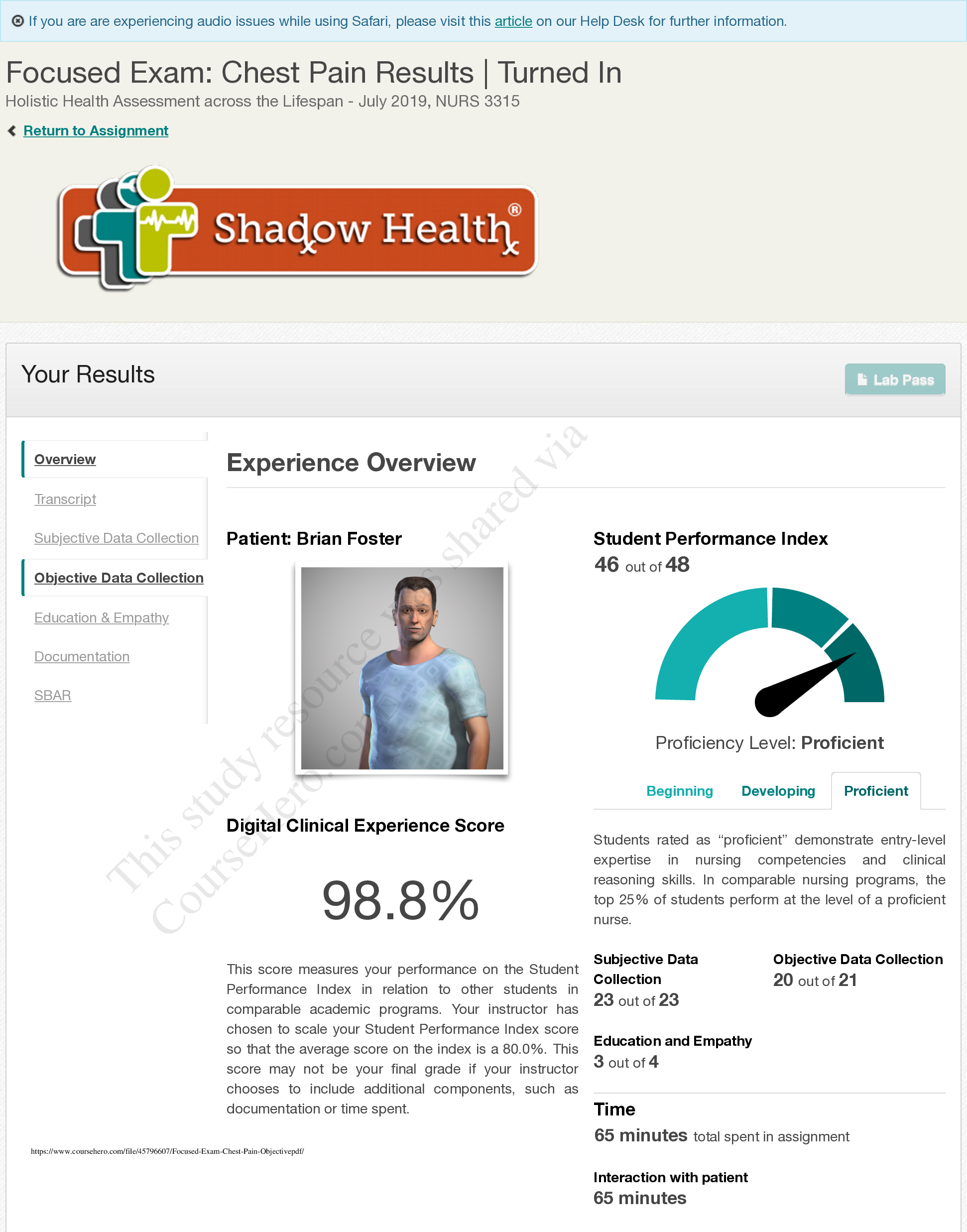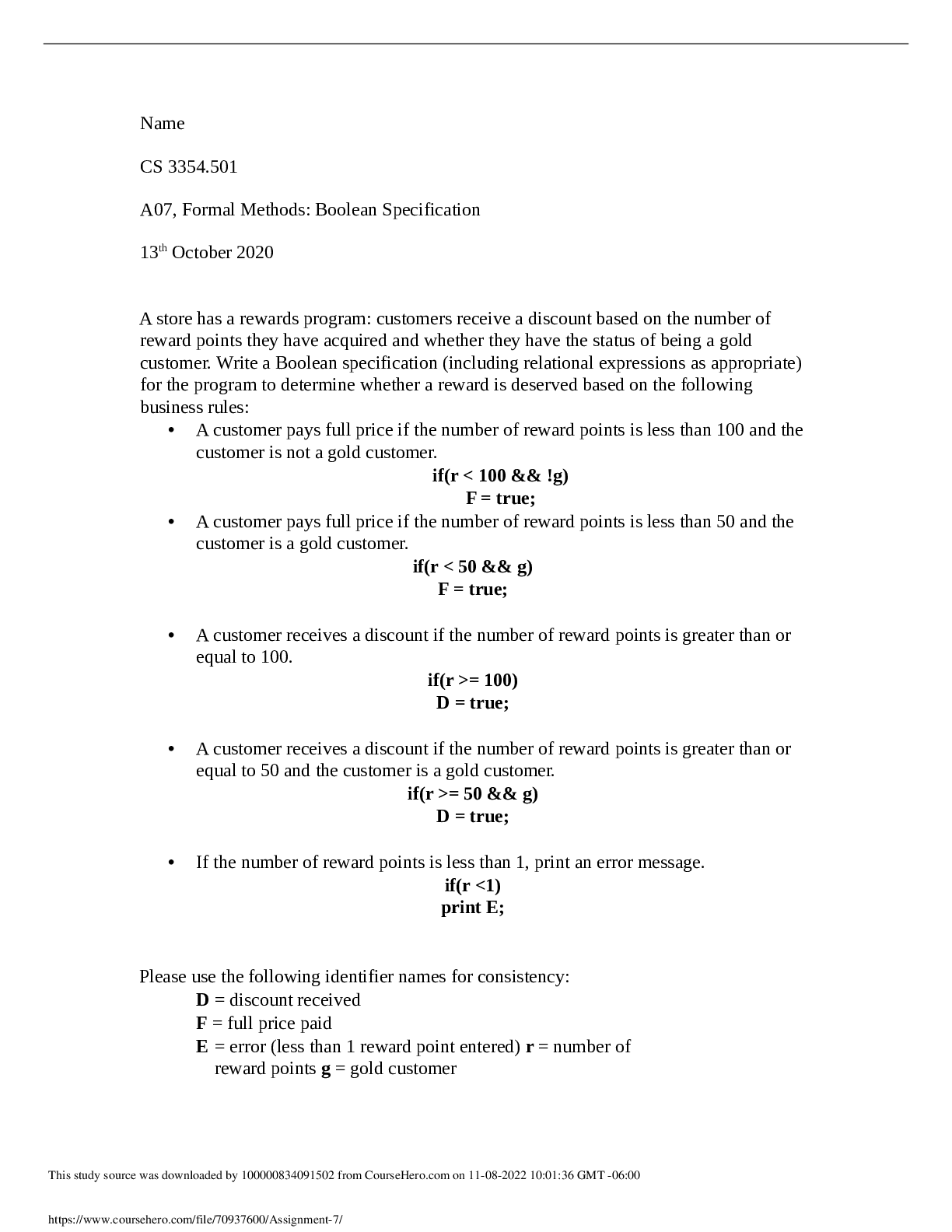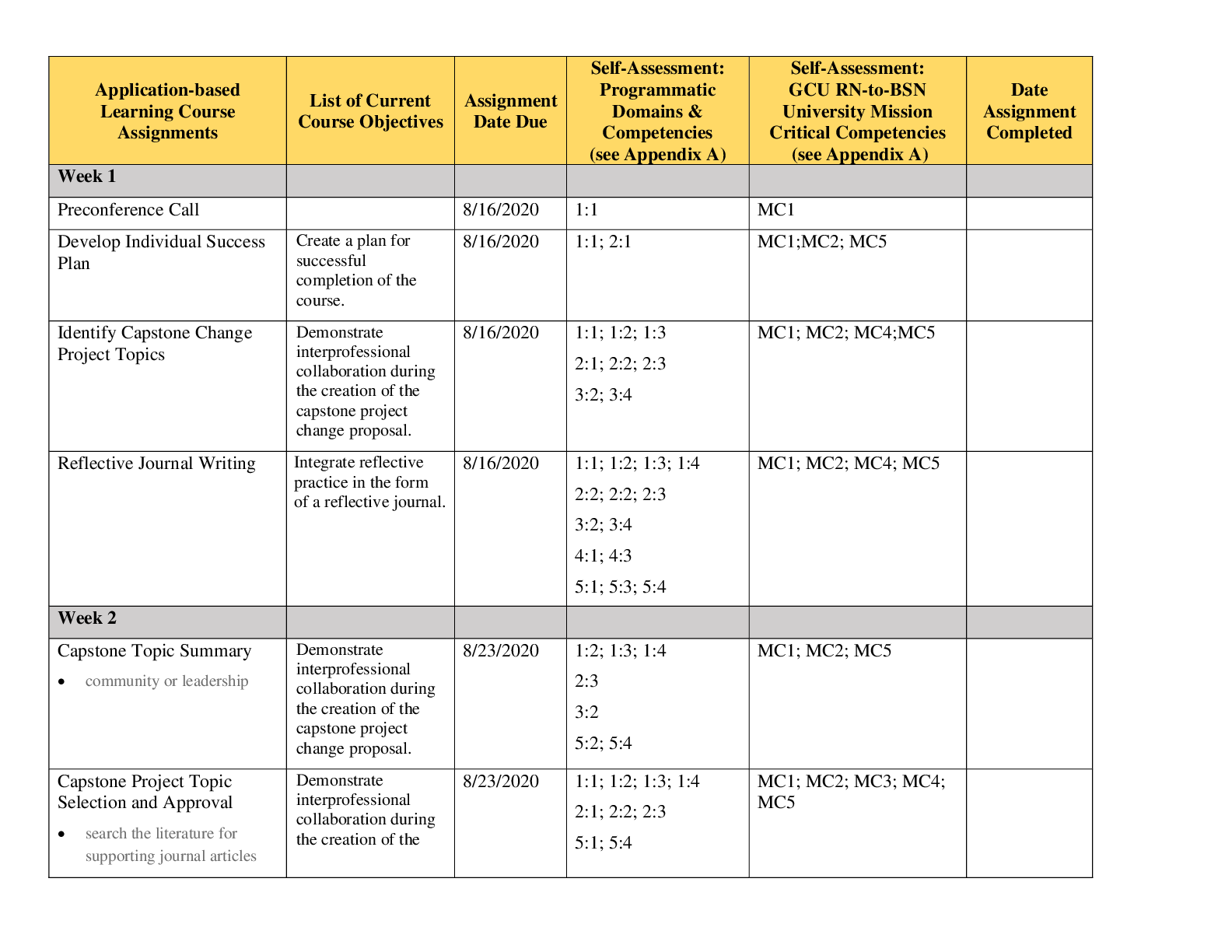*NURSING > STUDY GUIDE > Med-Surg Success University of Texas, Arlington - NURS MISC (All)
Med-Surg Success University of Texas, Arlington - NURS MISC
Document Content and Description Below
62. The elderly male client is admitted to the medical unit with a diagnosis of senile dementia. The client is 74 inches tall and weighs 54.5 kg. The client lives with his son and daughter-in-law, b... oth of whom work outside the house. Which referral is most important for the nurse to implement? 1. Adult Protective Services. 2. Social worker. 3. Medicare ombudsman. 4. Dietitian. 63. The nurse working in a homeless shelter identifies an adolescent female sexually aggressive toward some of the males in the shelter. Which is the most common cause for this behavior? 1. The client is acting in a learned behavior pattern to get attention. 2. The client had to leave home because of promiscuous behavior. 3. The client has a psychiatric disorder called nymphomania. 4. The client is a prostitute and is trying to get customers. 64. The adolescent female comes to the school nurse of an intermediate school and tells the nurse she thinks she is pregnant. During the interview, the client states her father is the baby’s father. Which intervention should the nurse implement first? 1. Complete a rape kit. 2. Notify Child Protective Services 3. Call the parents to come to the school. 4. Arrange for the client to go to a free clinic. 65. The nurse in an outpatient rehabilitation facility is working with convicted child abusers. Which characteristics should the nurse expect to observe in the abusers? Select all that apply. 1. The abuser calls the child a liar. 2. The abuser has a tendency toward violence. 3. The abuser exhibits a high self-esteem. 4. The abuser is unable to admit the need for help. 5. The abuser was spoiled as a child. 66. The nurse is teaching a class about rape prevention to a group of women at a community center. Which information is not a myth about rape? 1. Women who are raped asked for it by dressing provocatively. 2. If a woman says no, it is a come on and she really does not mean it. 3. Rape is an attempt to exert power and control over the client. 4. All victims of sexual assault are women; men can’t be raped. 67. The nurse working in the emergency department is admitting a 34-year-old female client for one of multiple admissions for spousal abuse. The client has refused to leave her husband or to press charges against him. Which action should the nurse implement? 1. Insist the woman press charges this time. 2. Treat the wounds and do nothing else. 3. Tell the woman her husband could kill her. 4. Give the woman the number of a woman’s shelter. 68. The 84-year-old female client is admitted with multiple burn marks on the torso and under the breasts along with contusions in various stages of healing. When questioned by the nurse, the woman denies any problems have occurred. The woman lives with her son and does the housework. Which is the most probable reason the woman denies being abused? 1. There has not been any abuse to report. 2. The client is ashamed to admit being abused. 3. The client has Alzheimer’s disease and can’t remember. 4. The client has engaged in consensual sex. 600 MED-SURG SUCCESS 2504_Ch15_591-628.qxd 10/28/10 1:08 PM Page 600 Copyright © 2011. F.A. Davis Company. All rights reserved. May not be reproduced in any form without permission from the publisher, except fair uses permitted under U.S. or applicable copyright law. EBSCO Publishing : eBook Collection (EBSCOhost) - printed on 5/19/2017 11:01 AM via JERSEY COLLEGE AN: 495462 ; Colgrove, Kathryn Cadenhead, Hargrove-Huttel, Ray A..; Med-surg Success : A Q&A Review Applying Critical Thinking to Test Taking Account: ns228275 69. Which question is an appropriate interview question for the nurse to use with clients involved in abuse? 1. “I know you are being abused. Can you tell me about it?” 2. “How much does your spouse drink before he hits you?” 3. “What did you do to cause your spouse to get mad?” 4. “Do you have a plan if your partner becomes abusive?” 70. The client who was abused as a child is diagnosed with post-traumatic stress disorder (PTSD). Which intervention should the nurse implement when the client is resting? 1. Call the client’s name to awaken him or her, but don’t touch the client. 2. Touch the client gently to let him or her know you are in the room. 3. Enter the room as quietly as possible to not disturb the client. 4. Do not allow the client to be awakened at all when sleeping. 71. The emergency department nurse writes the problem of “ineffective coping” for a client who has been raped. Which intervention should the nurse implement? 1. Encourage the client to take the “morning-after” pill. 2. Allow the client to admit guilt for causing the rape. 3. Provide a list of rape crisis counselors. 4. Discuss reporting the case to the police. 72. The nurse writes a nursing diagnosis of “risk for injury as a result of physical abuse by spouse” for a client. Which is an appropriate goal for this client? 1. The client will learn not to trust anyone. 2. The client will admit the abuse is happening and get help. 3. The client will discuss the nurse’s suspicions with the spouse. 4. The client will choose to stay with the spouse. CHAPTER 15 EMERGENCY NURSING 601 2504_Ch15_591-628.qxd 10/28/10 1:08 PM Page 601 Copyright © 2011. F.A. Davis Company. All rights reserved. May not be reproduced in any form without permission from the publisher, except fair uses permitted under U.S. or applicable copyright law. EBSCO Publishing : eBook Collection (EBSCOhost) - printed on 5/19/2017 11:01 AM via JERSEY COLLEGE AN: 495462 ; Colgrove, Kathryn Cadenhead, Hargrove-Huttel, Ray A..; Med-surg Success : A Q&A Review Applying Critical Thinking to Test Taking Account: ns228275 PRACTICE QUESTIONS ANSWERS AND RATIONALES 602 3. The client must have a urinary output of at least 30 mL/hr, so 90 mL in the last four (4) hours indicates impaired renal perfusion, which is a sign of worsening shock and warrants immediate intervention. 4. The client being thirsty is not an uncommon complaint for a client in septic shock. TEST-TAKING HINT: The words “warrant immediate intervention” mean the nurse must do something, which frequently is notify the health-care provider. Any client in shock will have signs and symptoms requiring the nurse to intervene. In this question, the test taker must determine priority and which data require immediate intervention. Content – Medical: Category of Health Alteration – Emergency: Integrated Nursing Process – Assessment: Client Needs – Physiological Integrity, Reduction of Risk Potential: Cognitive Level – Analysis. 4. 1. The client’s diet is not priority when transcribing orders. 2. An IV antibiotic is the priority medication for the client with an infection, which is the definition of sepsis—a systemic bacterial infection of the blood. A new order for an IV antibiotic should be implemented within one (1) hour of receiving the order. 3. Diagnostic tests are important but not priority over intervening in a potentially life-threatening situation such as septic shock. 4. There is no indication this client has diabetes in the stem of the question, and glucose levels are not associated with signs/symptoms of septicemia. TEST-TAKING HINT: Remember, if the test taker can rule out two answers—options “1” and “4”—and cannot determine the right answer between options “2” and “3,” select the option directly affecting or treating the client, which is antibiotics. Diagnostic tests do not treat the client. Content – Medical: Category of Health Alteration – Emergency: Integrated Nursing Process – Implementation: Client Needs – Safe Effective Care Environment, Management of Care: Cognitive Level – Application. 5. 1. The client diagnosed with neurogenic shock will have dry, warm skin, rather than cool, moist skin as seen in hypovolemic shock. Shock 1. 16 mm Hg pulse pressure. The pulse pressure is the systolic BP minus the diastolic BP. 100 60 = 40 mm Hg pulse pressure in first BP reading 88 64 = 24 mm Hg pulse pressure in second reading 40 24 = 16 mm Hg pulse pressure narrowing. A narrowing or decreased pulse pressure is an earlier indicator of shock than a decrease in systolic blood pressure. TEST-TAKING HINT: If the test taker is not aware of how to obtain a pulse pressure, the only numbers provided in the stem are systolic and diastolic blood pressures. The test taker should do something with the [Show More]
Last updated: 1 year ago
Preview 1 out of 69 pages
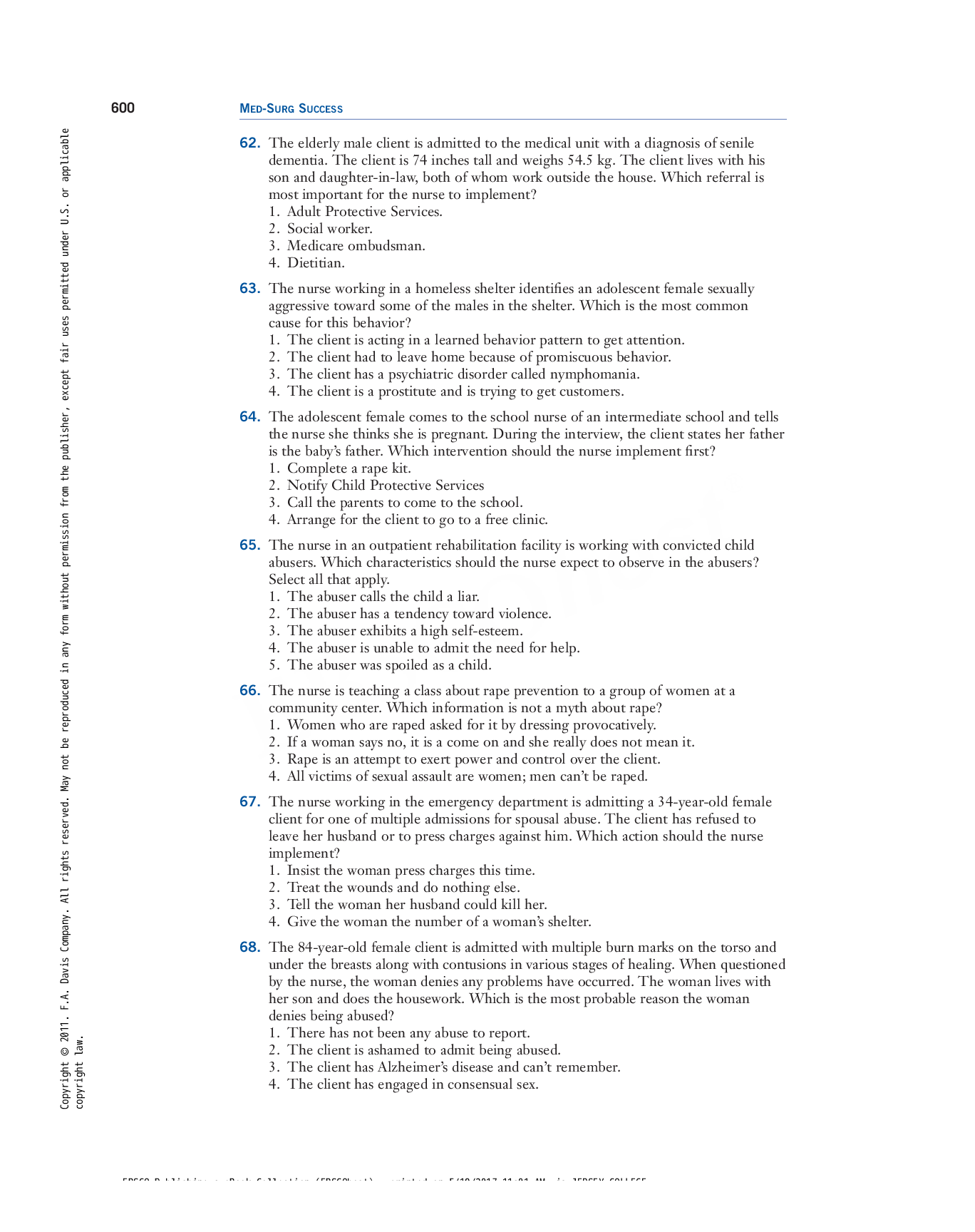
Reviews( 0 )
Document information
Connected school, study & course
About the document
Uploaded On
Mar 05, 2021
Number of pages
69
Written in
Additional information
This document has been written for:
Uploaded
Mar 05, 2021
Downloads
0
Views
48

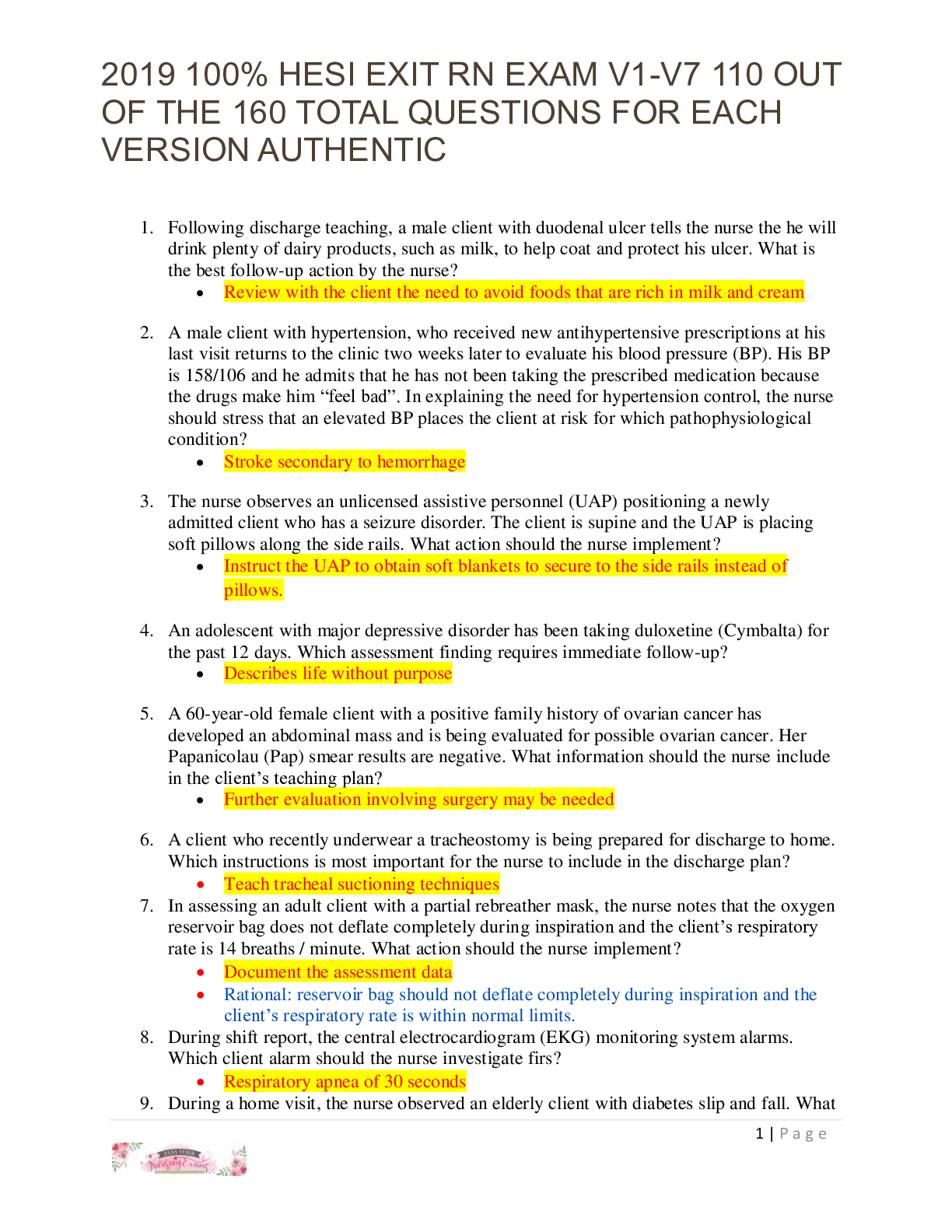

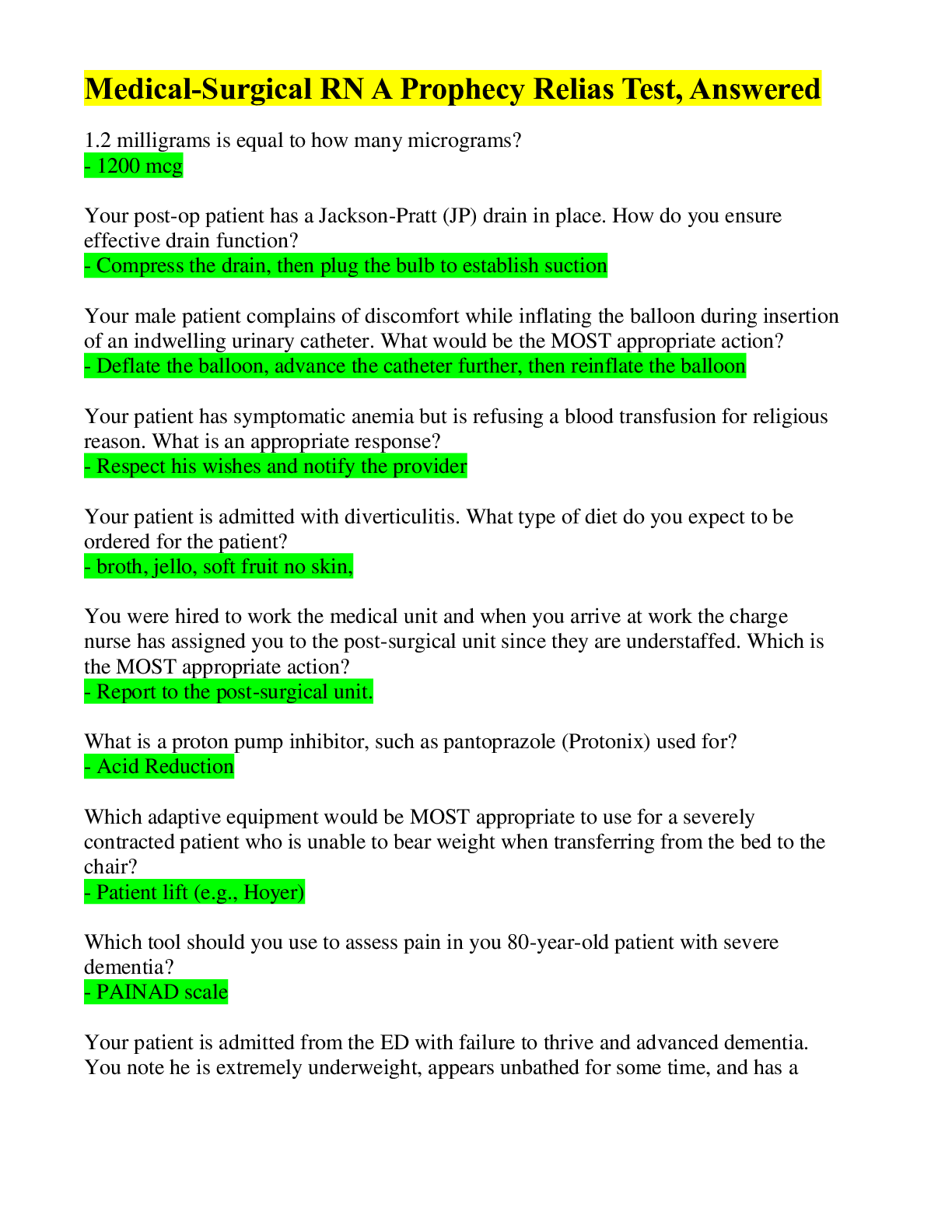
.png)

.png)

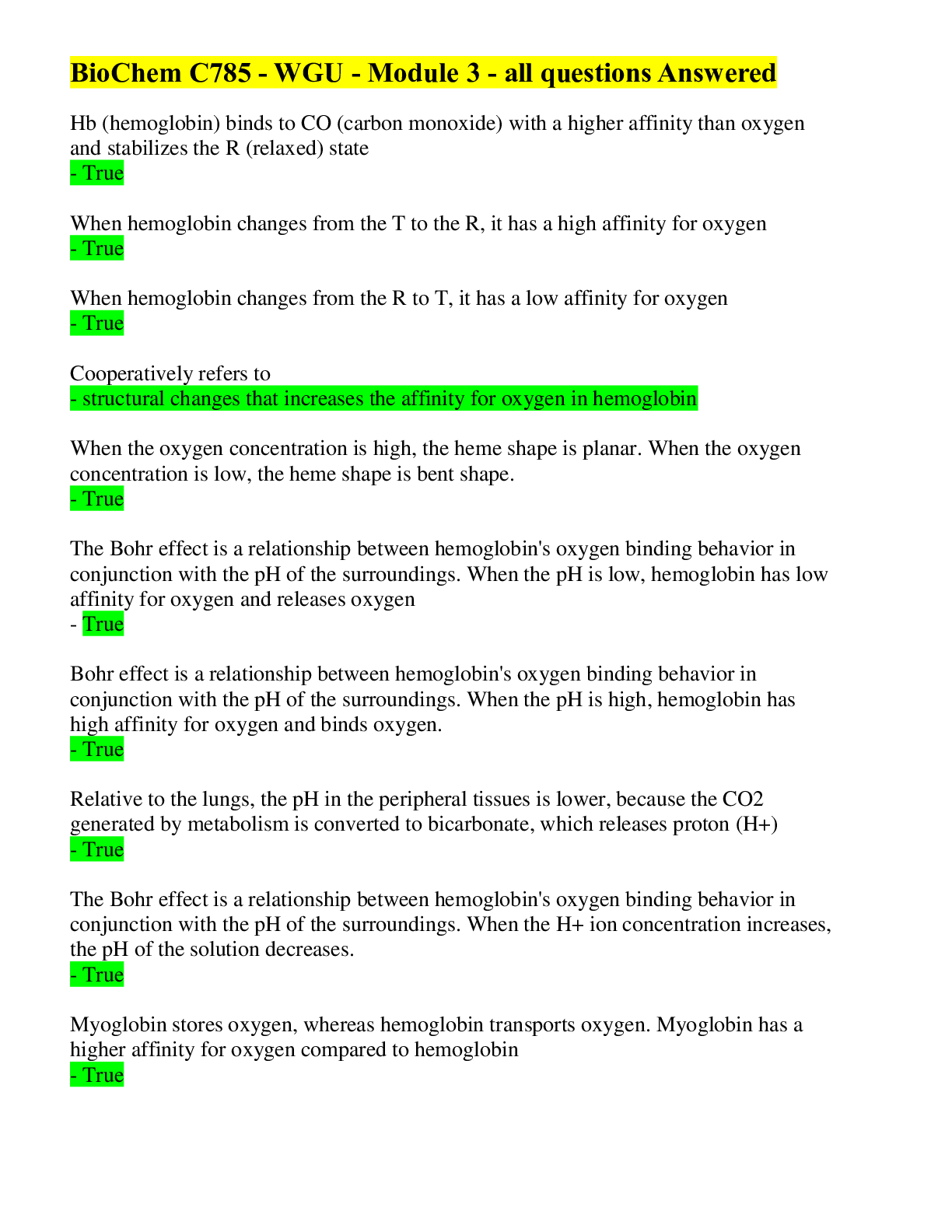

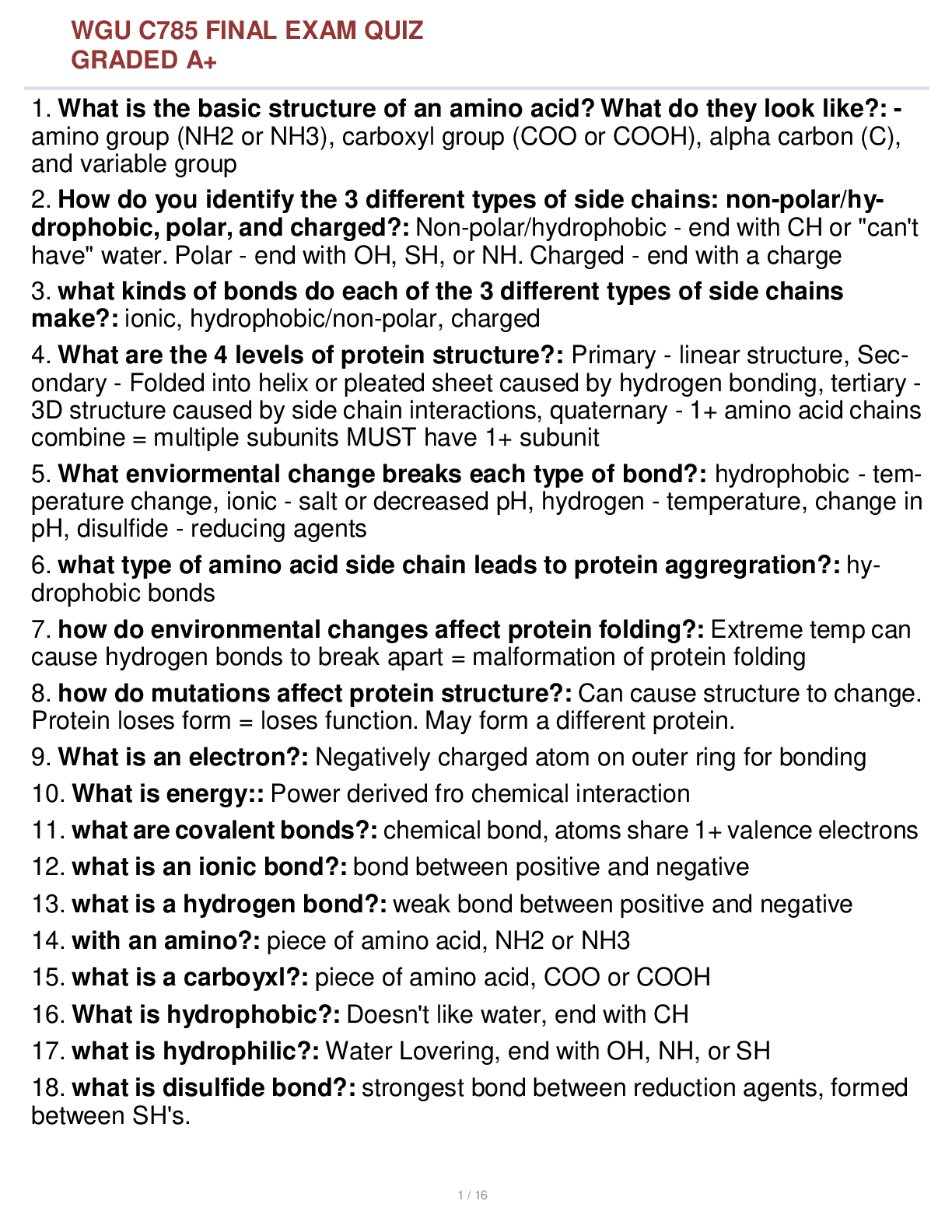
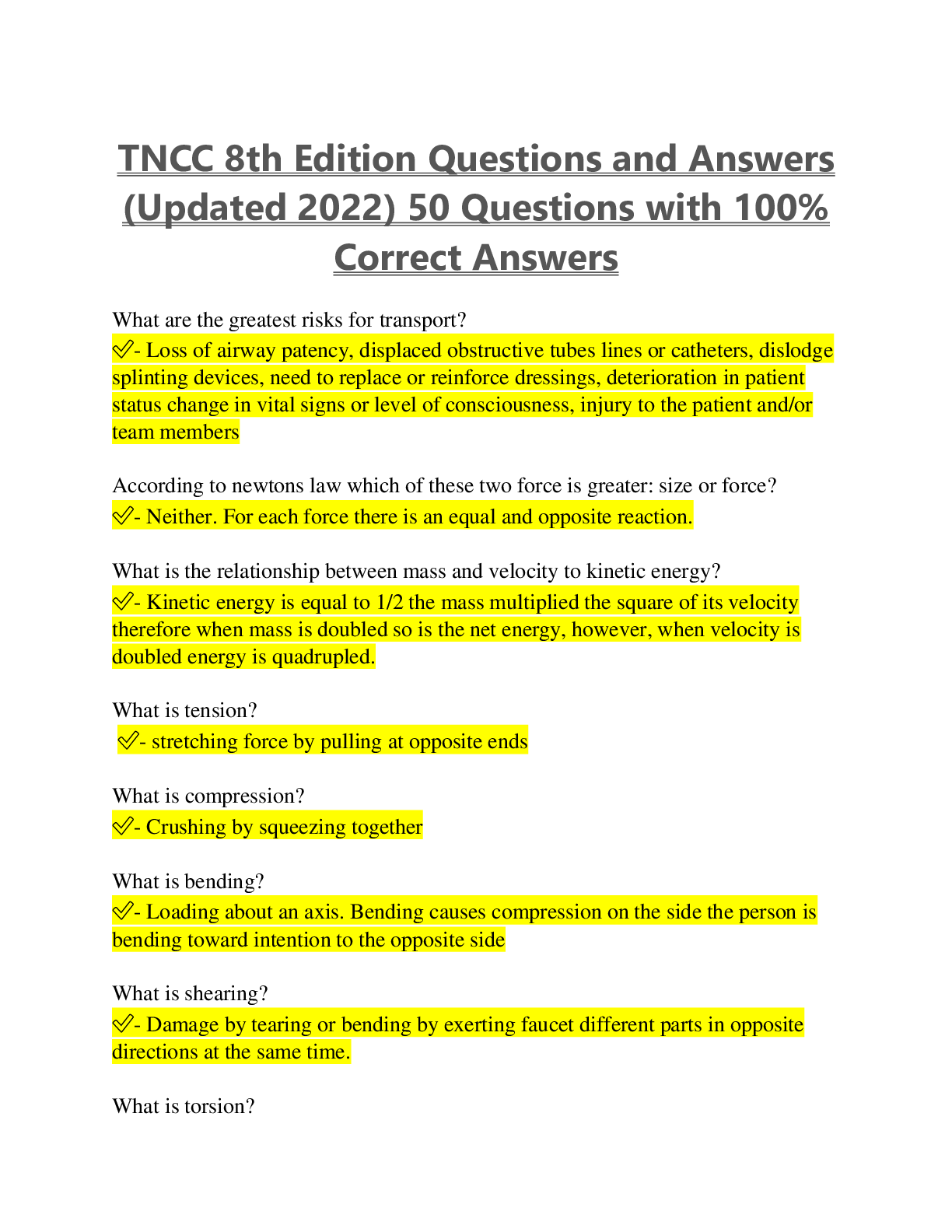
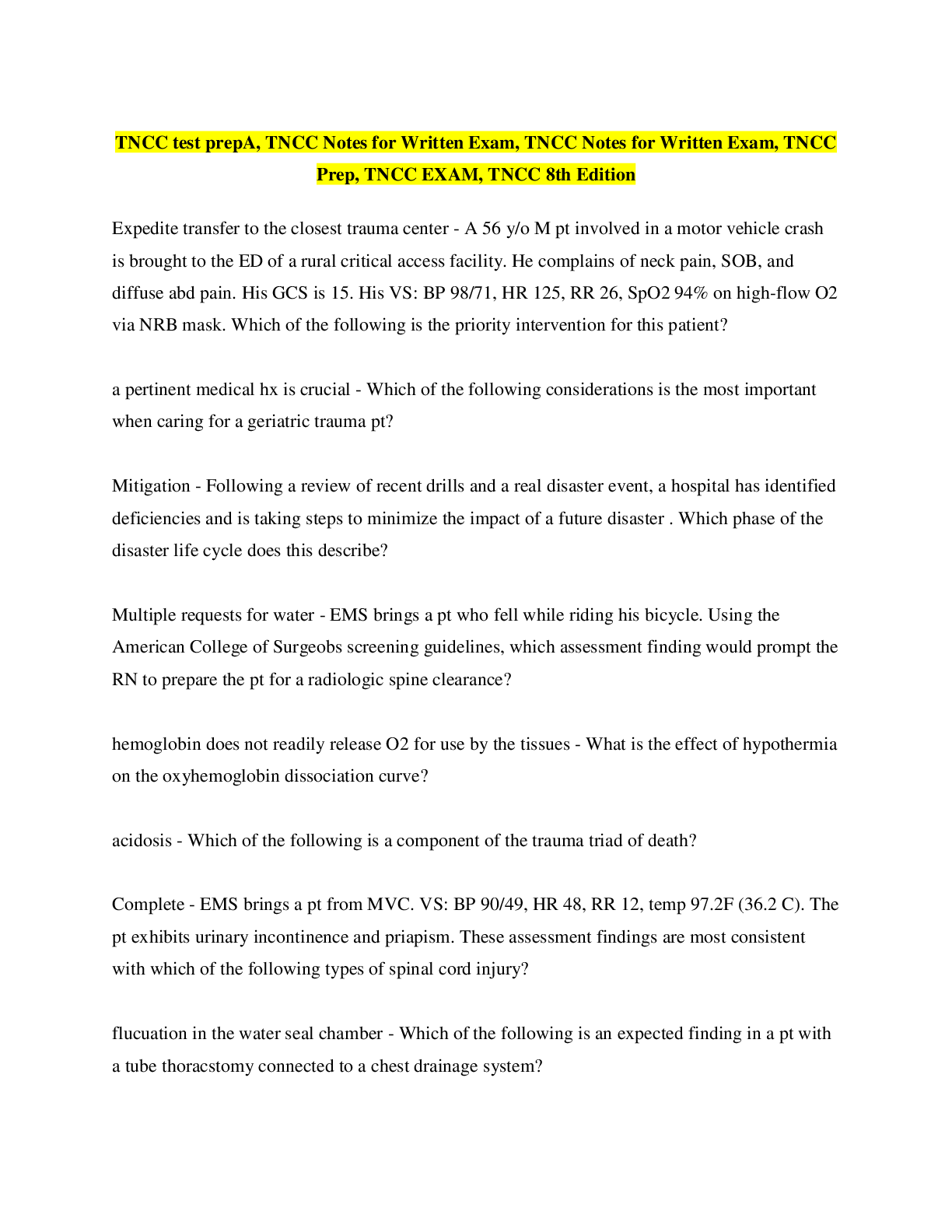
.png)
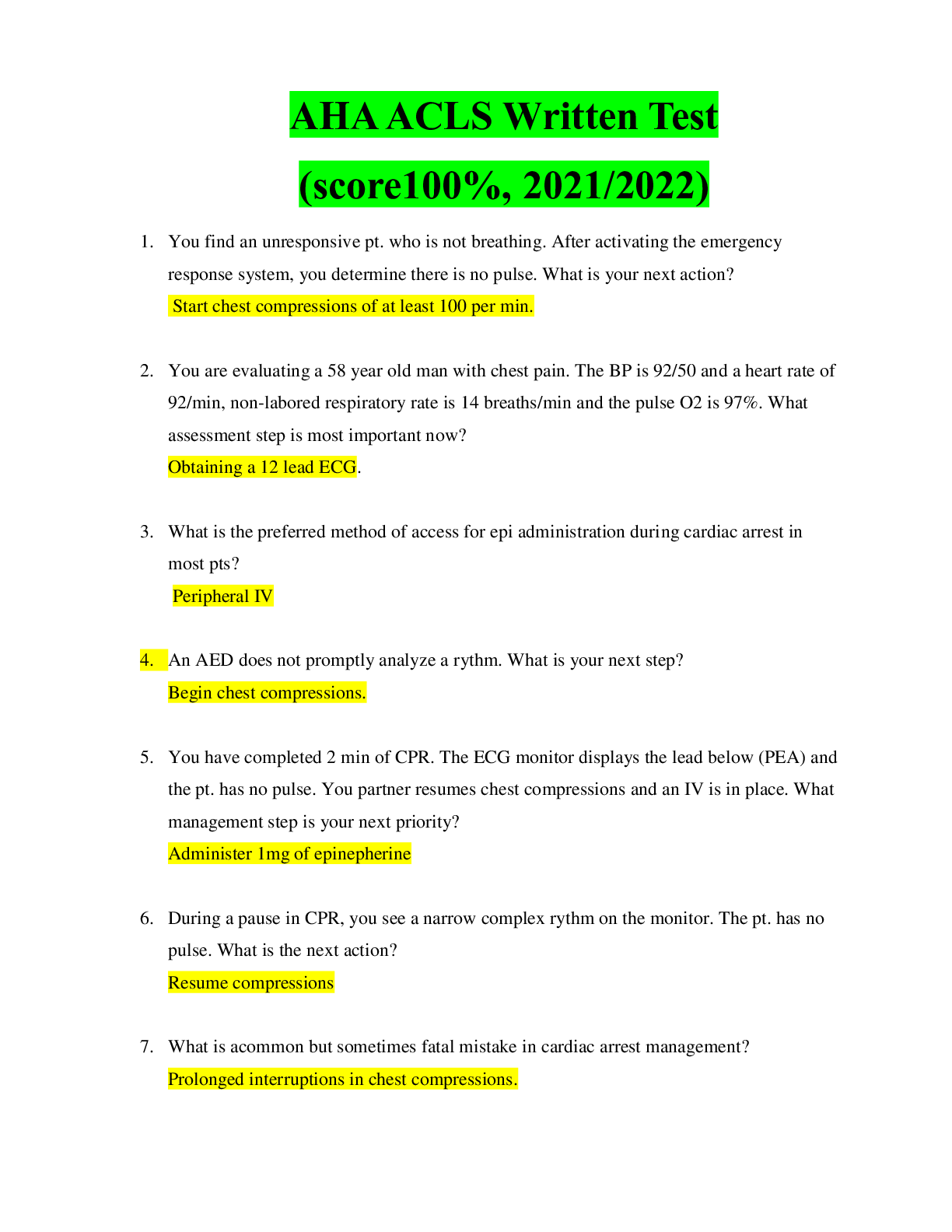
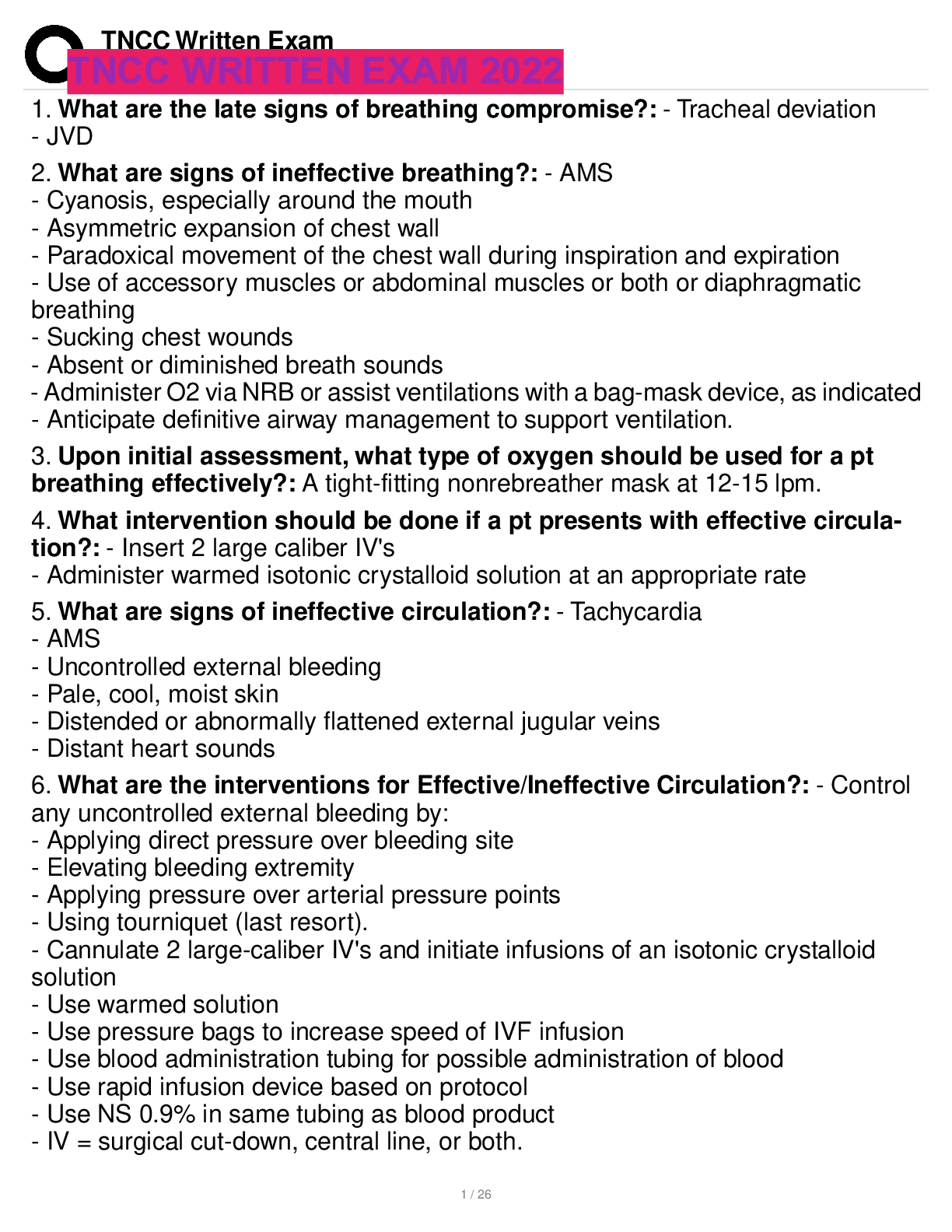




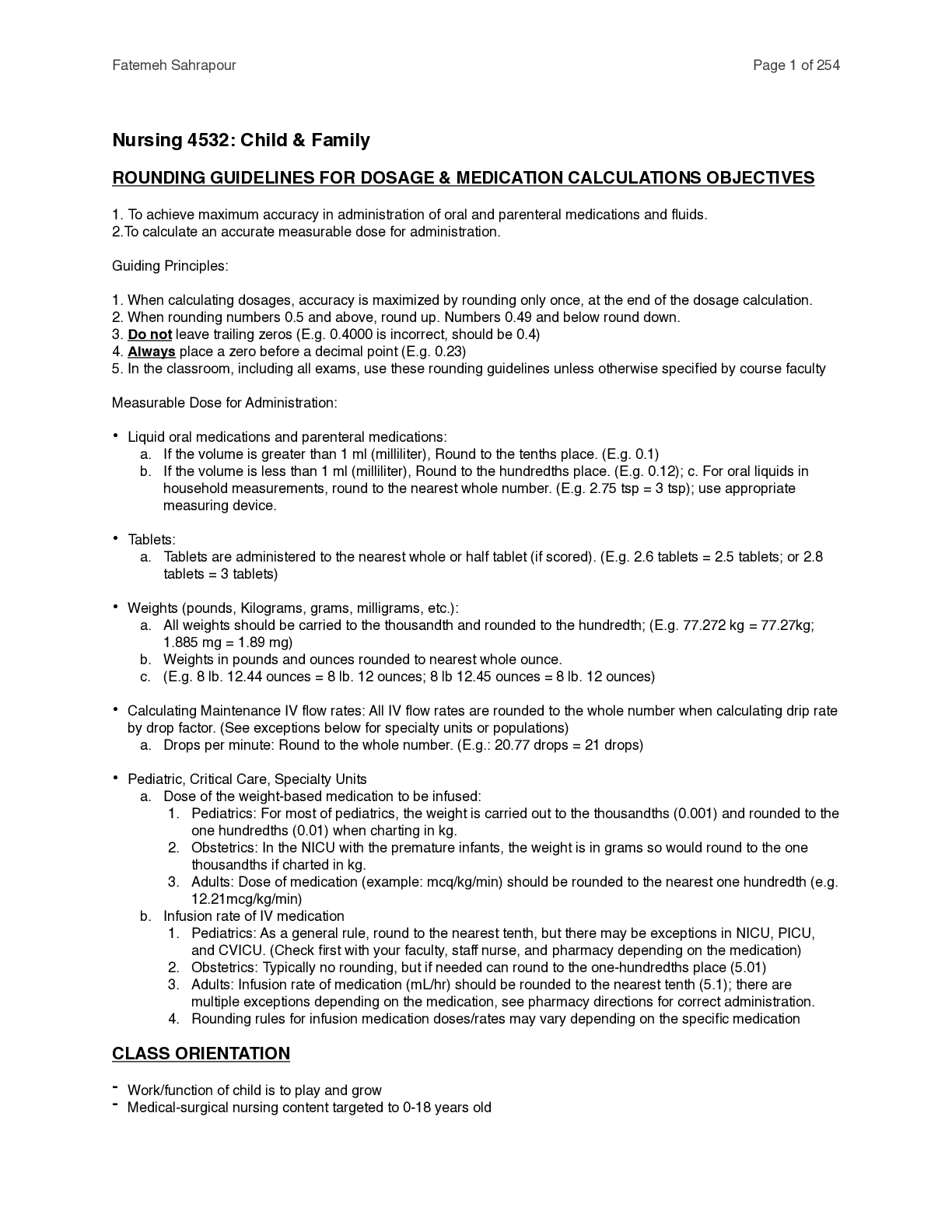

.png)
